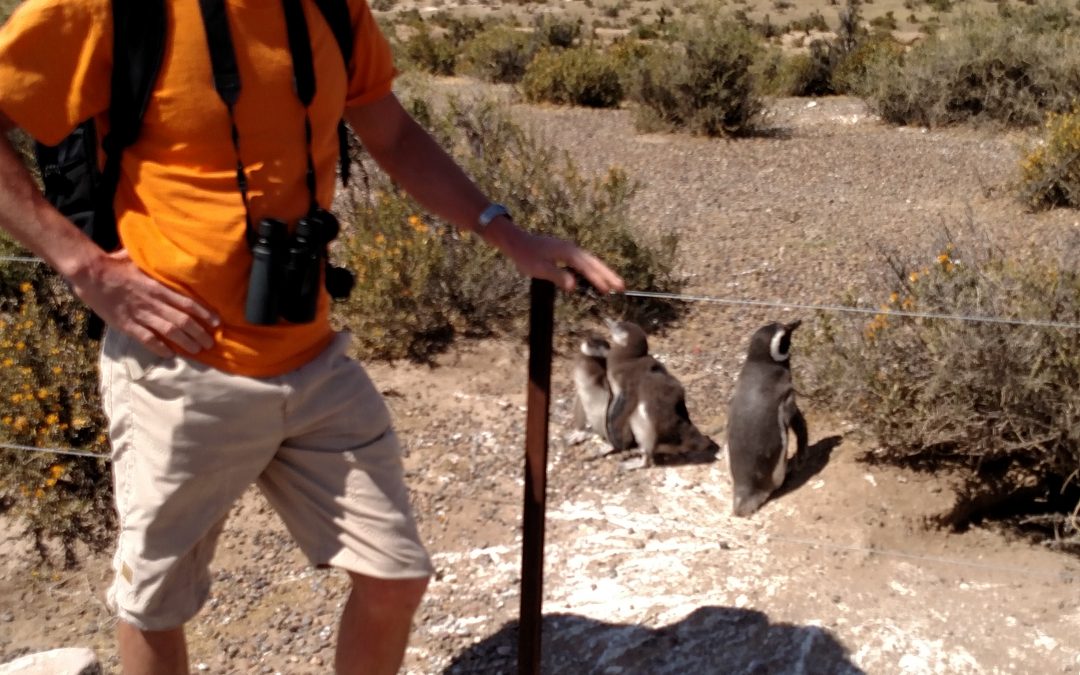The seeds of conservation and preservation were planted in me during my formative years while camping with my family in Columbia County just north of Madison. But it took a solo cross country bike ride for me to elevate my game and pursue land stewardship with a passion.

NRF Board Member Dave Adam
The Ah-Ha! Moment
It was the fall of 2014 and I was mentally and physically drained after spending a few days pedaling across Kansas. Forewarned about the intense easterlies, I still underestimated the effort required to take on 15 to 20 mile per hour headwinds where the denuded plains terrain (flat and featureless) offered little relief. The experience proved very demoralizing.
Resting in my motel room one night, I read how the poor land management practices of the plains farmers in the 1920’s led to the Dust Bowl of the 1930’s. President Roosevelt came up with a plan to plant 300 million trees to combat wind erosion. About 30 million trees were planted by the Civilian Conservation Corps, but World War II spiked demand for grain and most of the trees were plowed under for crops, leaving the barren wind-tunnel that I had biked through that day.
I concluded that land in private hands is prone to the pursuit of profitability, leaving lasting consequences on the environment. At the same time, volunteering with the Natural Resources Foundation (NRF) and other environmental organizations has taught me that land in public hands, without adequate resources and stewardship practices, opens the door to let invasive species overwhelm the original ecosystems.
From Inspiration to Investment
Thankfully, I crossed Kansas and my ride wrapped up a few weeks later in the state of Virginia. Not long afterwards, I purchased a parcel of land north of Whitewater, put up for sale by a retiring farmer who had had the foresight to put much of the acreage in a permanent conservation easement with the Wetlands Reserve Program (WRP). Maintaining this property would require exactly the kind of long-term commitment to stewardship and conservation that I wanted to make.
The property includes more than half a mile along the Bark River, a shallow, meandering and slow-moving body of water that frequently floods in the spring. It offers a mix of wetlands, scrape ponds, woods and both lowland and upland prairie. This habitat helps make the property an e-birding hotspot, with 166 different species identified to date. While birding was my initial interest, through great partnerships with organizations like The Prairie Enthusiasts, UW-Whitewater, the Southern Kettle Moraine State Natural Area Volunteers and many others, I’ve come to appreciate the plant life, animals such as otters and meadow jumping mice, and trees like 250-year-old burr oaks that are 12 feet in circumference. I also have a new-found respect for nature’s nasties—nest destroying critters like raccoons and coyotes, invasive buckthorn, garlic mustard, sweet clover, and reed canary grass.
The Return on that Investment
I hope this will be one of my get-your-butt-out-of-bed retirement passions. I hope it is something to be experienced with my family, including my sons and wildlife biologist brother, Mike. I hope to share it with UW-Whitewater’s faculty and students and my neighbors and new-found friends with conservation interests. It is neither easy nor inexpensive, and nature never takes a vacation. And yet I’m already collecting returns that, I believe, far outweigh my investment.
Nature is unpredictable, which keeps me engaged. My property offers so much to learn, from turtles to butterflies to macro-invertebrates. Who needs TV or crossword puzzles when there’s an endless array of flora and fauna to explore?
My education and vocation have been in finance, where I focus on concepts like return on investment and the time value of money. As I get older and ponder what I want to leave behind, I’ve concluded that time is life’s most precious currency. How we spend it defines our character and the legacy we leave. In my mind, one of the best returns involves preserving and enhancing some of the land that I believe God has entrusted to us.
This is not the easiest way to spend time, but it is the most rewarding for me.
I believe that, through NRF, people, including those who do not own land, can likewise contribute to this effort of managing land in Wisconsin.
Blog contributed by Dave Adam, NRF board member.
For more information on Dave Adam’s property or the cross-country bike ride:
www.adamconservancy.com
www.biking4alz.com
